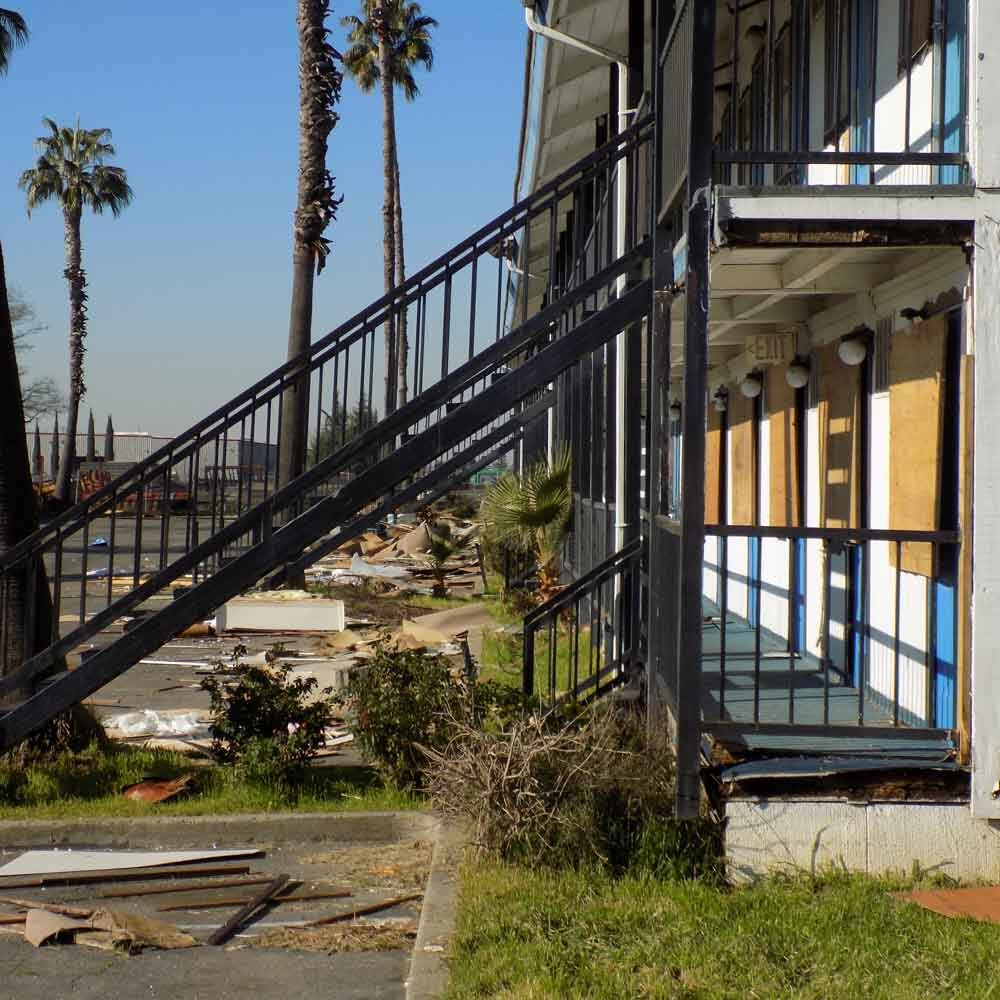Add a description of me here, please!
Read MoreIn the 9 years prior to our appointment, local code enforcement tried to work with the owners of this motel to fix the 203 separate violations of state housing law onsite. There was a complete lack of maintenance of the property, demonstrated by the jet-black water in the swimming pool. The conditions at the motel were so severe that they actually sparked a fire. The fire caused considerable damage to a neighboring property, where it burned out and destroyed a business that had been operating at that location for over 35 years. This case is evidence of the significant danger that violations of municipal and state health and safety laws pose to the surrounding community.
Read MoreSadly, ownership changed hands and the property fell into disrepair. Upon our appointment by a Superior Court Judge, we found the 62-room hotel to be very poorly maintained with guests living in extremely unsanitary conditions. Rooms were soiled, some lacked running water, part of the roof was wide open allowing pigeons to roost inside, the hotel was infested with pests, and there were multiple broken windows. The hotel didn’t just lack basic amenities, it was also dangerous. A ceiling had collapsed in the basement, dry rot and exposure to the elements had damaged the structural integrity, there were unpermitted and unsafe modifications to the building, and electrical and plumbing installations were shoddy.
Read MoreA property deteriorated from an upscale establishment into a public nuisance. When the nuisance conditions were finally remedied, space was created for the property's redevelopment. While most would not have anticipated the decline of this once popular and prestigious establishment, the story is familiar to CRG. It shows just how effective health and safety receivership can be at remedying nuisance properties and initiating a ripple effect for revitalization efforts.
Read MoreThis dilapidated motel was open to the public despite dangerous conditions, including guest rooms that lacked running water, significant structural deterioration, unsafe electrical wiring, and evidence of asbestos. We reached the decision in collaboration with court and city officials that the building was not salvageable and should be demolished. We collaborated with six different fire departments to burn the motel down safely in a controlled practice burn.
Read MoreControlled practice burns are good for both the neighborhood and for firefighters, and these particular properties were found by a court to meet the criteria for demolition. This unique approach fits when a variety of factors exist: the nuisance property is not physically and financially salvageable; the nuisance conditions will not jeopardize the safety of firefighters or neighboring properties; and environmental and weather conditions will not spread the fire beyond a controlled area.
Read MoreBuilt at the turn of the 20th century, this elegant 3-story hotel is on both the California and National Register of Historic Places. Once a hub for the community, the site of weddings, school proms, and the center of political gossip in the municipality, sadly this hotel has sat vacant and in various states of disrepair for over two decades.
Read MoreWhen the street on which this property is located saw dwindling visitors following the construction of Interstate 5, many businesses in the area closed their doors, abandoning the buildings that housed them. With a building use that has low demand, a property can devolve into nuisance conditions, as happened in this case. See how CRG is making changes through health and safety receivership.
Read More









